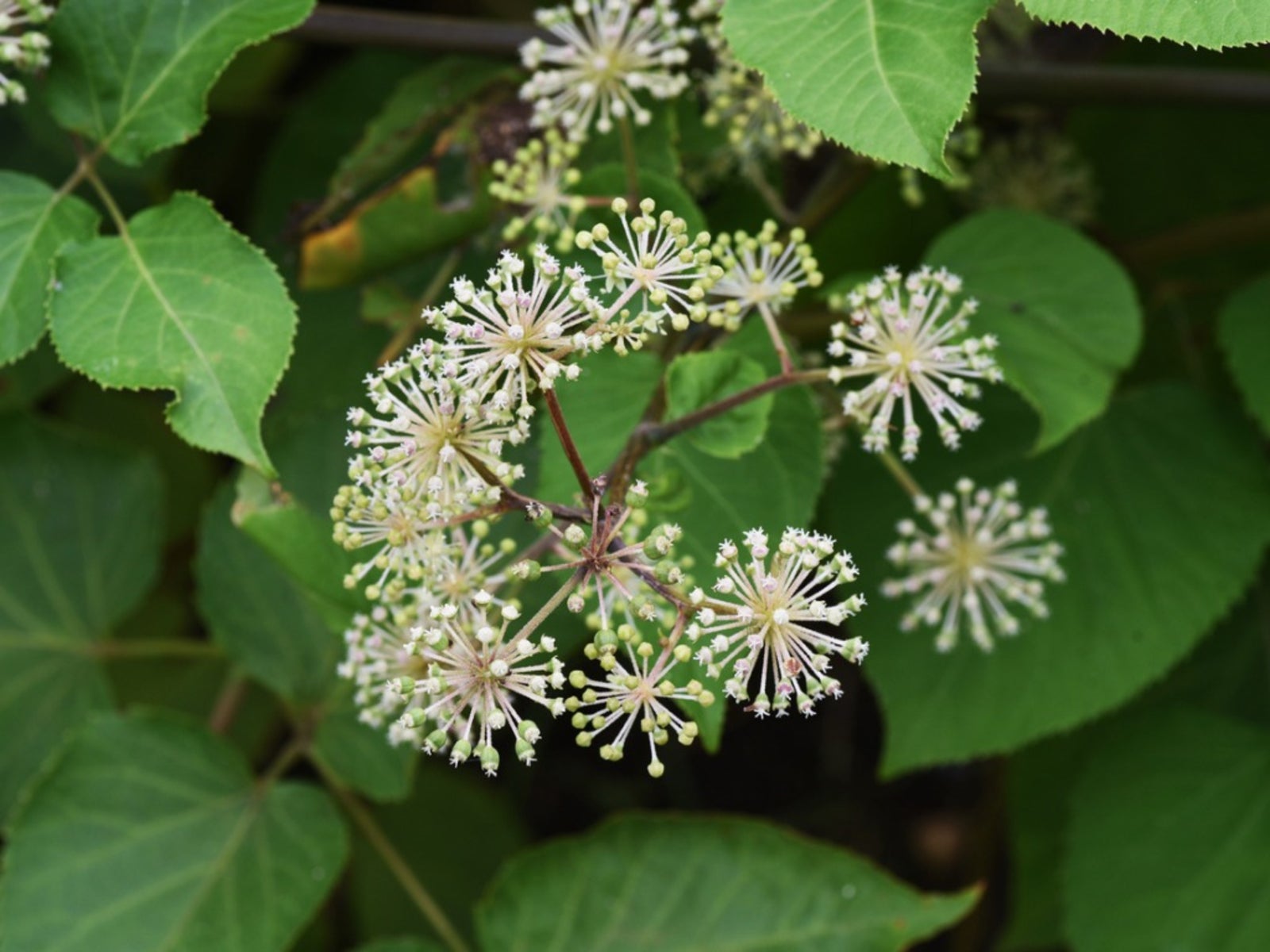Spikenard Shrub Information – Tips On Growing Spikenard Plants


What is a spikenard plant? It’s not the best known species for the garden, but you definitely want to take a look at cultivating this wildflower. It offers small summer blossoms and bright berries that attract birds. Read on for tips on growing spikenard plants in cultivation.
What is a Spikenard Plant?
Spikenard shrub information tells you that this is a native plant, growing in the wild in many states in the eastern part of the country. You’ll find several varieties, including California spikenard (Aralia californica), Japanese spikenard (Aralia cordata) and American spikenard (Aralia racemosa). The plants grow to the height of shrubs, some rising to six feet (1.8 m.) tall. However, they are really perennials, dying back in fall to resprout again from the roots in spring. If you start growing spikenard plants, you’ll love the large oval leaves, toothed around the edges. And come summer, the branch tips hang heavy with yellow flower clusters, attracting bees. By autumn, the flowers are gone, replaced by burgundy toned berries. These provide food for wild birds. At the same time as the berries appear, the leaves begin to turn gold, providing a stunning contrast.
Spikenard Cultivation
If you want to start growing spikenard plants, you’ll need to get the right site. In the wild, spikenard plants grow in shady woodlands and thickets. Select a site offering the same elements. Companions should also be a consideration. Spikenard plants are big and leafy, and will easily overshadow anything delicate. You’ll do best to plant spikenard with big, showy plants like hosta, a shade-tolerant perennial with similar growing requirements. Ferns are another companion to consider planting if you are growing spikenand plants. Think large fern varieties like the East Indian holly fern (Arachniodes simplicior ‘Variegata’). These native plants need a part sun/part shade location with protection from winds. To begin spikenard cultivation, plant spikenard seeds in moist, well-draining soil. Spring planting should wait until all chance of frost is past. For those growing in cool climates, you can start the seeds indoors. Then transplant the young seedlings to their permanent location in spring, again after the threat of frost is over. Don’t wait for the plants to establish to transplant them, as it is difficult to move these plants once they are mature. That makes it important to pick an appropriate site the first time.
Gardening tips, videos, info and more delivered right to your inbox!
Sign up for the Gardening Know How newsletter today and receive a free copy of our e-book "How to Grow Delicious Tomatoes".

Teo Spengler is a master gardener and a docent at the San Francisco Botanical Garden, where she hosts public tours. She has studied horticulture and written about nature, trees, plants, and gardening for more than two decades. Her extended family includes some 30 houseplants and hundreds of outdoor plants, including 250 trees, which are her main passion. Spengler currently splits her life between San Francisco and the French Basque Country, though she was raised in Alaska, giving her experience of gardening in a range of climates.
-
 Moody Blooms For Spring: 8 Types Of Black Flowers To Add Drama To Spring Displays
Moody Blooms For Spring: 8 Types Of Black Flowers To Add Drama To Spring DisplaysFrom midnight burgundies to inky violets, several types of black flowers can enrich and embolden a spring display. Try these brooding bloomers for a moody garden
By Tonya Barnett
-
 Can Snake Plants Live Outside? Everything You Need To Know For Snake Plants Al Fresco
Can Snake Plants Live Outside? Everything You Need To Know For Snake Plants Al FrescoSnake plants can live outside given the right conditions, but be careful that they don't take over! Learn the best way to use snake plants in your landscape.
By Mary Ellen Ellis